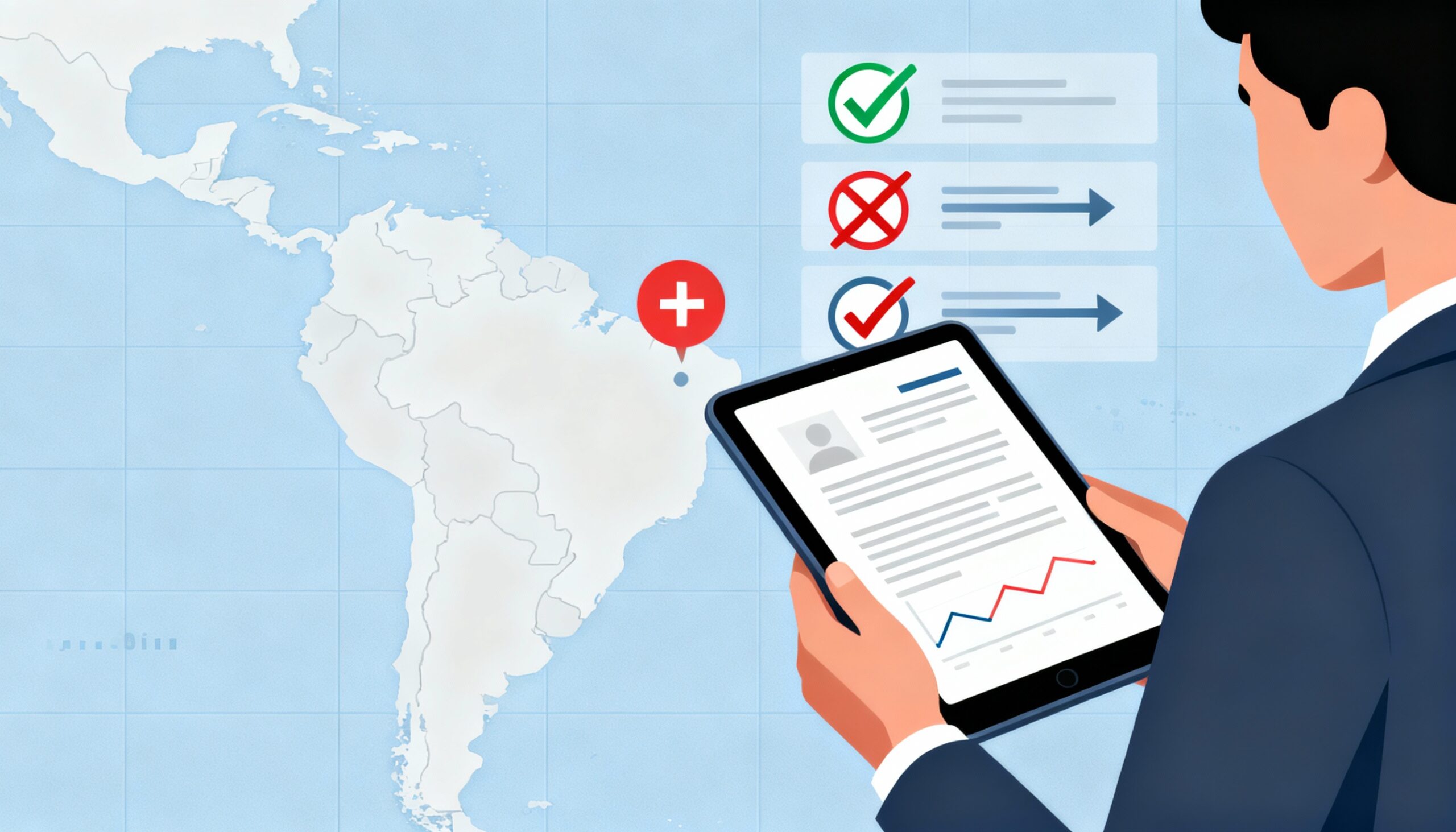The Hidden Cost of Bad Addresses: Understanding UPS Address Correction Fees and How to Eliminate Them
In the fast-paced world of e-commerce, every dollar counts. While businesses meticulously track inventory costs, marketing expenses, and shipping rates, there’s one sneaky fee that often flies under the radar until it’s too late: UPS address correction fees. These seemingly small charges can accumulate into thousands of dollars annually, silently eating away at your profit margins. The good news? They’re entirely preventable with the right approach to address validation.
If you’ve ever wondered why your shipping costs seem higher than expected, or if you’ve noticed mysterious charges on your UPS invoices, you’re not alone. Address correction fees affect countless businesses, from small online retailers to large enterprises. In this comprehensive guide, we’ll explore everything you need to know about UPS address correction fees, how they work, and most importantly, how modern address validation solutions like Address Guard can help you eliminate them entirely.
What Are UPS Address Correction Fees?
UPS address correction fees are surcharges applied when UPS needs to correct or modify an address to successfully deliver a package. These fees are triggered when the shipping address provided by the sender contains errors, is incomplete, or doesn’t match UPS’s standardized address database. Think of it as a penalty for making UPS do extra work to figure out where your package actually needs to go.
When you ship a package with an incorrect or non-standard address, UPS doesn’t simply return it to sender. Instead, their sophisticated systems and personnel work to identify the correct delivery location. This process involves automated address matching algorithms, manual intervention by UPS staff, and sometimes even contacting the recipient directly. All of this extra effort costs UPS time and money, which they pass on to you in the form of address correction fees.
The current UPS address correction fee stands at $18.60 per package for ground services and $21.00 for air services as of 2024. While these amounts might seem manageable for a single package, imagine shipping hundreds or thousands of packages monthly. A business shipping just 100 packages per month with a 5% address error rate could be paying nearly $1,000 annually in completely avoidable fees. For larger operations, these costs can escalate to tens of thousands of dollars per year.
What makes these fees particularly frustrating is that they’re applied retroactively. You won’t know about them until you receive your invoice, often weeks after the shipment was delivered. By then, it’s too late to do anything about it. The package has been delivered, the fee has been incurred, and you’re left wondering how to prevent it from happening again.
How Do UPS Address Correction Fees Work?
Understanding the mechanics of how UPS identifies and charges for address corrections is crucial for businesses looking to avoid these fees. The process is more complex than many shippers realize, involving multiple systems and checkpoints throughout the shipping journey.
The Address Verification Process
When you create a shipping label, UPS’s system immediately begins analyzing the provided address. Their sophisticated software compares the entered address against multiple databases, including the United States Postal Service (USPS) database, their own delivery database built from millions of successful deliveries, and third-party address verification services. This initial check happens in milliseconds and determines whether your package will proceed normally or require intervention.
If the system detects any discrepancies, it flags the package for address correction. These discrepancies can range from obvious errors like misspelled street names to subtle issues like using “Street” instead of “Drive” or including an apartment number in the wrong field. Even seemingly minor inconsistencies can trigger the correction process.
Common Triggers for Address Correction Fees
The reasons for address correction fees are more varied than most businesses realize. Missing apartment or suite numbers are perhaps the most common trigger, especially for residential deliveries in multi-unit buildings. UPS’s system recognizes when an address should have a unit number based on their database, and missing this information automatically triggers a correction.
Incorrect ZIP codes present another frequent problem. Even if the rest of the address is correct, a wrong ZIP code forces UPS to reroute the package to the correct delivery zone, incurring the correction fee. Sometimes shippers use old ZIP codes that have been changed due to postal service reorganization, or they simply transpose digits when entering the information.
Formatting issues also commonly trigger fees. UPS expects addresses in a specific format, and deviations can cause problems. Using abbreviations inconsistently, placing information in the wrong fields, or including unnecessary punctuation can all lead to corrections. For example, writing “123 Main Street, Apartment 4B” in the address line 1 field instead of properly separating the apartment number into the designated field will likely trigger a fee.
Business deliveries come with their own set of challenges. Shipping to “John Smith” at a large office building without including the company name can trigger a correction. Similarly, outdated business addresses for companies that have moved, or using old business names after mergers or rebranding, will require UPS to update the delivery information.
The Correction Timeline
The address correction process typically unfolds across several stages. During the initial processing at the origin facility, packages with flagged addresses are set aside for review. UPS staff or automated systems attempt to correct the address using available databases and historical delivery information. If the correction can be made confidently, the package continues its journey with the updated address.
For more complex cases, the package might be held at intermediate facilities while UPS investigates the correct delivery address. This can involve contacting the recipient, checking with local delivery drivers familiar with the area, or cross-referencing multiple data sources. Each additional step in this process adds to UPS’s costs, justifying the correction fee.
Once the address is corrected and the package is delivered, the fee is recorded in UPS’s billing system. These fees typically appear on invoices 2-4 weeks after the shipment date, often grouped with other accessorial charges. Many businesses don’t notice them immediately, especially if they’re buried among dozens or hundreds of other shipping charges.
The Real Impact on Your Business
The true cost of address correction fees extends far beyond the immediate financial impact. While the direct fees are certainly significant, they represent just the tip of the iceberg when it comes to how address problems affect your business operations and customer relationships.
Financial Implications
Consider a medium-sized e-commerce business shipping 1,000 packages per month. Industry statistics suggest that without proper address validation, approximately 7-10% of shipments will have some form of address issue. Even at the lower end of this range, that’s 70 packages per month incurring correction fees. At $18.60 per correction, this business is losing $1,302 monthly or $15,624 annually to completely preventable fees.
For businesses with higher shipping volumes, the numbers become even more staggering. A company shipping 10,000 packages monthly could easily be paying over $150,000 annually in address correction fees if they’re not actively managing address quality. This is money that could be invested in growth, marketing, product development, or simply added to the bottom line.
The financial impact compounds when you consider that address correction fees are often accompanied by other charges. Packages with incorrect addresses are more likely to require additional delivery attempts, incurring redelivery fees. They’re also more prone to being returned to sender, resulting in return shipping costs and the need to reship the item correctly.
Operational Disruptions
Beyond the direct costs, address issues create operational headaches that drain resources and reduce efficiency. Customer service teams spend countless hours fielding calls about delayed or missing packages, many of which stem from address problems. Each inquiry requires time to investigate, communicate with UPS, and resolve with the customer.
Warehouse and fulfillment operations also suffer when packages are returned due to address issues. Staff must process the return, inspect the items, restock inventory, and prepare new shipments. This double handling increases labor costs and the risk of errors or damage. It also ties up inventory that could otherwise be sold, potentially leading to stockouts of popular items.
The administrative burden of managing address corrections shouldn’t be underestimated either. Accounting teams must reconcile invoices with unexpected fees, dispute incorrect charges, and adjust budgets to accommodate these unplanned expenses. Operations managers must investigate recurring address issues and implement process improvements, taking time away from other strategic initiatives.
Customer Experience Degradation
Perhaps the most significant impact of address issues is on customer satisfaction and loyalty. When packages are delayed due to address corrections, customers become frustrated and anxious about their orders. They’ve paid for shipping, possibly even expedited shipping, and expect their items to arrive on time. Delays erode trust and can lead to negative reviews, social media complaints, and lost future sales.
The problem is particularly acute for time-sensitive shipments. A birthday gift that arrives late due to an address correction loses much of its value. A critical business supply that’s delayed can disrupt operations. These failures, even when technically not the seller’s fault, reflect poorly on your brand and can damage long-term customer relationships.
Consider also the impact on customer lifetime value. Studies show that customers who experience delivery problems are significantly less likely to make repeat purchases. If address issues affect even a small percentage of your customers, the long-term revenue impact far exceeds the immediate correction fees.
How Address Guard Eliminates UPS Correction Fees
This is where Address Guard (addressguard.io) enters the picture as a game-changing solution for businesses tired of paying unnecessary address correction fees. Address Guard is a sophisticated address validation platform that integrates seamlessly with your existing e-commerce or shipping systems to validate and standardize addresses in real-time, before orders are finalized and labels are printed.
Real-Time Address Validation
Address Guard’s core functionality revolves around real-time address validation at the point of entry. When a customer enters their shipping address on your website or when your staff inputs an address into your order management system, Address Guard immediately validates it against multiple authoritative databases, including USPS, UPS, FedEx, and proprietary databases built from millions of successful deliveries.
The validation happens instantly, within milliseconds, ensuring no delay in the checkout process. If an address is entered correctly and matches the standardized format, the customer proceeds without any interruption. However, if issues are detected, Address Guard immediately provides intelligent suggestions to correct the problem before the order is submitted.
For example, if a customer enters “123 Main St” but forgets to include their apartment number, Address Guard recognizes that this address is a multi-unit building and prompts for the missing information. If someone types “Maim Street” instead of “Main Street,” the system suggests the correction. These interventions happen seamlessly, improving address quality without creating friction in the customer experience.
Comprehensive Address Standardization
Beyond simple validation, Address Guard standardizes addresses to match carrier preferences exactly. This means converting “Avenue” to “Ave,” ensuring proper capitalization, formatting apartment numbers correctly, and placing all address components in the appropriate fields. This standardization ensures that when your address data reaches UPS’s system, it matches their expected format perfectly, eliminating any possibility of correction fees.
The platform also handles complex addressing scenarios that often trip up businesses. It correctly formats military addresses (APO/FPO), international addresses, PO boxes, and rural route addresses. It understands the nuances of different regions, from New York City’s borough-based addressing to rural areas where addresses might reference landmarks rather than street numbers.
Address Guard maintains updated databases that reflect recent changes in postal codes, street names, and delivery points. When municipalities rename streets, renumber buildings, or reorganize postal codes, Address Guard’s database is updated to reflect these changes, ensuring your shipments always use current, correct addressing information.
Intelligent Address Enhancement
One of Address Guard’s most powerful features is its ability to enhance incomplete addresses with missing information. Using advanced algorithms and comprehensive databases, the platform can often fill in missing details that customers might not know or remember to include.
For instance, if a customer provides a street address and city but forgets the ZIP code, Address Guard can append the correct ZIP+4 code. If they include a company name but not the suite number, the system can often provide it. This enhancement happens behind the scenes, creating complete, deliverable addresses without requiring additional input from customers.
The platform also performs sophisticated duplicate detection and householding, identifying when multiple variations of the same address exist in your system. This helps prevent shipping multiple packages to slight variations of the same address, reducing both correction fees and potential fraud.
Seamless Integration and Implementation
Address Guard is designed to integrate effortlessly with popular e-commerce platforms, shopping carts, order management systems, and shipping software. Whether you’re using Shopify, WooCommerce, Magento, or a custom-built system, Address Guard can be implemented quickly with minimal technical effort.
The platform offers multiple integration options to suit different technical needs and preferences. REST APIs allow for custom integrations with any system capable of making HTTP requests. JavaScript widgets can be embedded directly into checkout pages for real-time validation. Batch processing options enable validation of existing address databases or bulk order imports.
For businesses concerned about implementation complexity, Address Guard provides comprehensive documentation, sample code, and dedicated support throughout the integration process. Most businesses can have Address Guard up and running within days, not weeks or months.
Implementation Best Practices
Successfully implementing address validation requires more than just installing software. To maximize the benefits and ensure smooth operations, businesses should follow established best practices that have been proven across thousands of successful implementations.
Choosing the Right Validation Points
The key to effective address validation is implementing it at the right points in your order flow. The most critical validation point is during checkout, where customers enter their shipping addresses. This is where Address Guard can have the most immediate impact, preventing bad addresses from entering your system in the first place.
However, don’t stop at checkout. Implement validation when customers create accounts or update their address books. Validate addresses when customer service representatives enter orders over the phone. Check addresses when importing bulk orders from B2B customers. Even validate addresses in your existing customer database periodically to catch any that have become outdated.
Consider implementing progressive validation, where addresses are checked character-by-character as they’re typed, providing instant feedback. This approach catches errors immediately and can even provide auto-complete suggestions, speeding up the checkout process while improving accuracy.
Handling Edge Cases
While address validation solves most problems, every business encounters edge cases that require special handling. New construction addresses might not yet appear in databases. Rural addresses might use non-standard descriptions. Some customers might have specific delivery instructions that don’t fit standard address formats.
Address Guard provides tools to handle these situations gracefully. Override options allow authorized users to approve addresses that fail validation when necessary. Customizable rules can be created for specific scenarios common to your business. Manual review queues can be established for addresses that require human judgment.
It’s important to train your team on when and how to use these override features. Document common edge cases and the appropriate responses. Create a feedback loop where override decisions are reviewed to identify patterns and improve the validation rules over time.
Monitoring and Optimization
Implementing address validation is not a set-it-and-forget-it solution. Continuous monitoring and optimization ensure you’re getting maximum value from the system. Address Guard provides comprehensive analytics and reporting tools to track validation performance and identify areas for improvement.
Monitor key metrics like validation success rates, correction acceptance rates, and override frequency. Look for patterns in validation failures that might indicate systematic issues with your order entry process or customer communication. Track the reduction in UPS correction fees month over month to quantify the ROI of your address validation investment.
Use Address Guard’s reporting features to identify problematic addresses or customers who consistently enter incorrect information. This data can inform targeted customer education efforts or process improvements. For B2B customers with recurring address issues, consider providing training or integration assistance to improve their data quality.
Training and Change Management
The success of any address validation implementation depends heavily on user adoption and proper training. Your customer service team needs to understand how address validation works and why it’s important. They should be able to explain to customers why addresses are being corrected and handle any concerns or objections.
Warehouse and fulfillment staff should understand how validated addresses improve their efficiency and reduce returns. Accounting teams should be trained to monitor the reduction in correction fees and calculate the ROI of the address validation system. Even marketing teams can benefit from understanding how improved delivery success rates enhance customer satisfaction and lifetime value.
Create standard operating procedures for address-related issues. Document how to handle validation failures, when to use overrides, and how to update customer addresses. Regularly review these procedures and update them based on new scenarios or carrier requirement changes.
Measuring Success and ROI
Implementing Address Guard is an investment in your business’s efficiency and profitability. To ensure you’re getting the maximum return on this investment, it’s essential to establish clear metrics and regularly measure your success.
Key Performance Indicators
The most obvious metric to track is the reduction in UPS address correction fees. Establish a baseline by calculating your average monthly correction fees for the past 6-12 months before implementing Address Guard. Then track the fees monthly after implementation. Most businesses see a 95% or greater reduction in correction fees within the first month.
Delivery success rate is another crucial metric. Track the percentage of packages delivered on the first attempt, without returns or redeliveries. Address validation typically improves first-attempt delivery rates by 3-5%, which translates to significant cost savings and customer satisfaction improvements.
Customer service metrics often show dramatic improvement after implementing address validation. Track the number of “where is my order” inquiries, the time spent resolving delivery issues, and customer satisfaction scores related to shipping. Many businesses report a 40-50% reduction in delivery-related customer service contacts.
Don’t forget to measure operational efficiency improvements. Track the time spent processing returns, correcting addresses manually, and reconciling shipping invoices. Calculate the labor cost savings from these efficiency improvements and add them to your ROI calculation.
Calculating Total ROI
To calculate the complete return on investment for Address Guard, consider all the areas of impact. Start with the direct savings from eliminated correction fees. Add the savings from reduced redelivery attempts and returns. Include the labor cost savings from reduced customer service inquiries and operational efficiency improvements.
Factor in the revenue impact as well. Improved delivery success rates lead to higher customer satisfaction and repeat purchase rates. Calculate the lifetime value improvement from customers who might have been lost due to delivery problems. Consider the value of improved cash flow from faster successful deliveries and fewer refunds.
Many businesses find that Address Guard pays for itself within the first month through correction fee savings alone. When all benefits are considered, the ROI often exceeds 1000% in the first year. This makes address validation one of the highest-return investments available to shipping-intensive businesses.
Conclusion: Taking Control of Your Shipping Costs
UPS address correction fees represent a hidden drain on profitability that too many businesses simply accept as a cost of doing business. But as we’ve explored throughout this article, these fees are entirely preventable with the right approach to address quality management. The $18.60 per package might seem small, but multiplied across hundreds or thousands of shipments, it becomes a significant expense that directly impacts your bottom line.
Address Guard offers a comprehensive solution that goes beyond simply avoiding fees. By implementing real-time address validation, you’re investing in improved customer satisfaction, operational efficiency, and long-term business growth. The platform’s sophisticated validation algorithms, seamless integration capabilities, and intelligent enhancement features make it an essential tool for any business serious about controlling shipping costs and delivering exceptional customer experiences.
The beauty of Address Guard lies not just in its technical capabilities, but in its immediate and measurable impact on your business. From day one, you’ll see fewer correction fees, fewer delivery delays, and fewer customer complaints. Your team will spend less time dealing with address-related issues and more time focusing on growth and innovation. Your customers will receive their orders faster and more reliably, building trust and loyalty with every successful delivery.
The e-commerce landscape is more competitive than ever, and businesses need every advantage they can get. By eliminating unnecessary costs like address correction fees, you’re not just saving money – you’re investing those resources into areas that drive growth and differentiation. Whether it’s improved marketing, better products, or enhanced customer service, every dollar saved on preventable fees is a dollar that can be invested in your business’s future.
Don’t let another month go by paying unnecessary address correction fees. Visit addressguard.io today to learn more about how Address Guard can transform your shipping operations. With flexible pricing plans, comprehensive support, and proven ROI, there’s never been a better time to take control of your address quality and eliminate UPS correction fees once and for all. Your bottom line – and your customers – will thank you.





